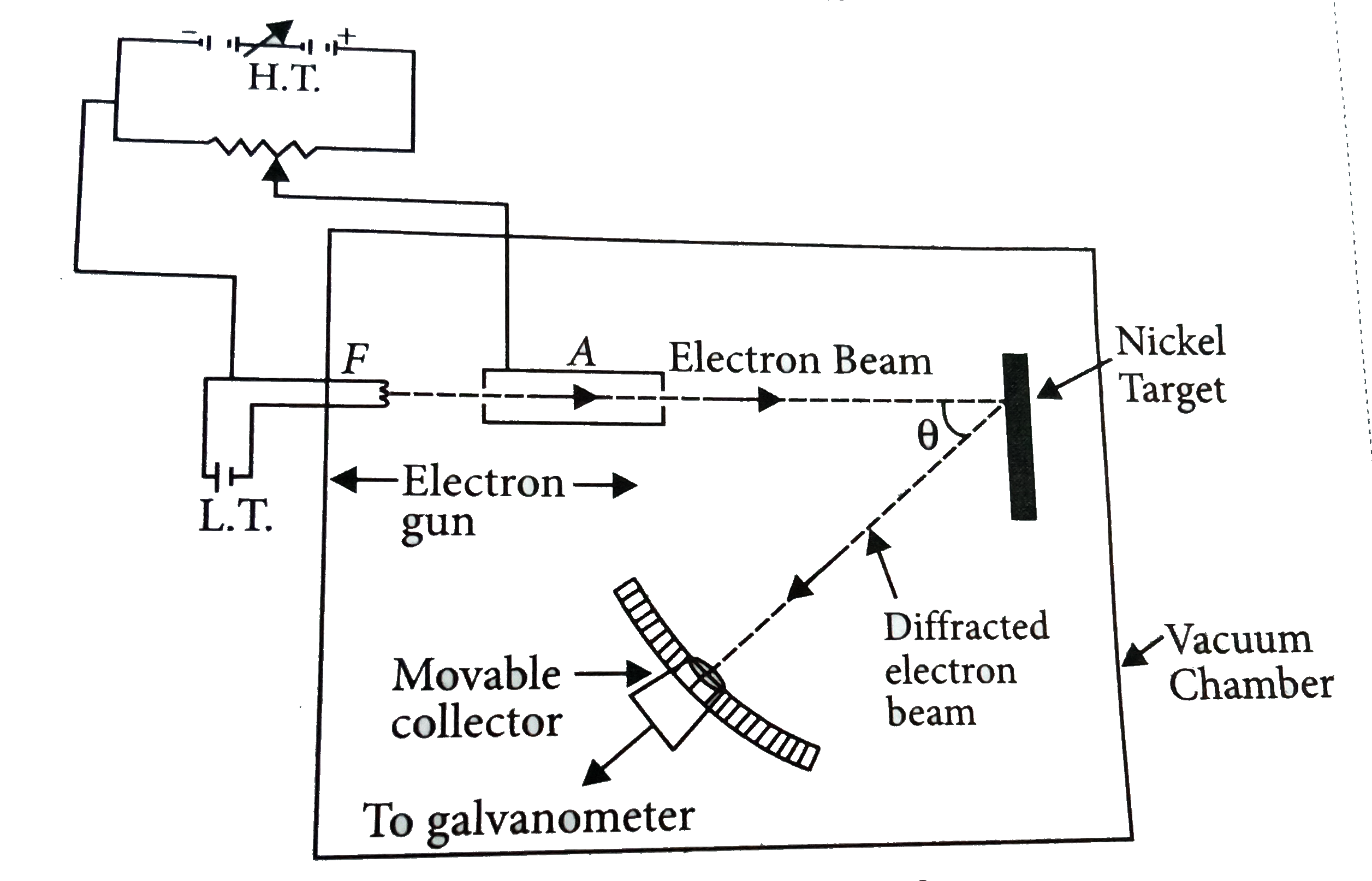Consider figure. Suppose the voltage applied to A is increased. The diffracted beam will have the maximum at a value of θ that

will be larger than the earlier value
will be the same as the earlier value
will be less than the earlier value
will depend on the target
In Davisson-Germer experiment the de-Broglie wavelength associated with electron is
λ=12.27√VÅ
where V is the applied valtage.
If there is a maxima of the diffracted electrons at an angle θ, then
2dsinθ=λ
From Eq. (i). we note that if V is inversely proportional to the wavelength λ. i.e., V will increase with the decrease in the λ.
From eq. (ii), we note that wavelength λ is directly proportional to sinθ and hence θ. So, with the decrease in λ,θ will also decreases.
Thus, when the voltage applied to A is increased. The diffracted beam will have the maximum at a value of θ that will be less than the earlier value.
Topper's Solved these Questions
- DUAL NATURE OF RADIATION AND MATTERBOOK - NCERT EXEMPLAR ENGLISHCHAPTER - DUAL NATURE OF RADIATION AND MATTEREXERCISE - VERY SHORT ANSWER TYPE QUESTIONS
5 Videos
- DUAL NATURE OF RADIATION AND MATTERBOOK - NCERT EXEMPLAR ENGLISHCHAPTER - DUAL NATURE OF RADIATION AND MATTEREXERCISE - SHORT ANSWER TYPE QUESTIONS
6 Videos
- CURRENT ELECTRICITYBOOK - NCERT EXEMPLAR ENGLISHCHAPTER - CURRENT ELECTRICITYEXERCISE - Very Short Answer Type Question.
20 Videos
- ELECTRIC CHARGES AND FIELDBOOK - NCERT EXEMPLAR ENGLISHCHAPTER - ELECTRIC CHARGES AND FIELDEXERCISE - Long Answer Type Question
6 Videos
Similar Questions
What is the maximum value of 1cosec θ?
View SolutionThe ratio of the maximum value to minimum value of 2cos2θ+cosθ+1 is :
View SolutionIf tanθ=3tanϕ, then the maximum value of tan2(θ−ϕ) is
View SolutionIn the figure, find the value of the applied voltage

View SolutionThe voltage applied to an X-ray tube is 18kV. The maximum mass of photon emitted by the X-ray tube will be
View SolutionThe voltage applied to an X-ray tube is 18 kV. The maximum mass of phton emitted by the X-ray tube will be
View SolutionA beam of monochromatic light of wavelength λ falls normally on a diffraction grating of line spacing d. If θ is the angle between the second-order diffracted beam and the direction of the incident light, what is the value of sinθ ?
View SolutionA beam of monochromatic light of wavelength λ falls normally on a diffraction grating of line spacing d. If θ is the angle between the second-order diffracted beam and the direction of the incident light, what is the value of sinθ ?
View SolutionConsider an infinite ladder of network shown In fig 5.223. A voltage is applied between points A and B. If the voltage is halved after each section, find the ratio of R1/R2.

View SolutionState whether the following are true or false. Justify your answer.
(i) sin(A+B)=sinA+sinB.
(ii) The value of sinθ increases as θ increases.
(iii) The value of cosθ increases as θ increases.
(iv) sinθ=cosθ for all values of θ
(v) cotA is not defined for A=0∘
View Solution
